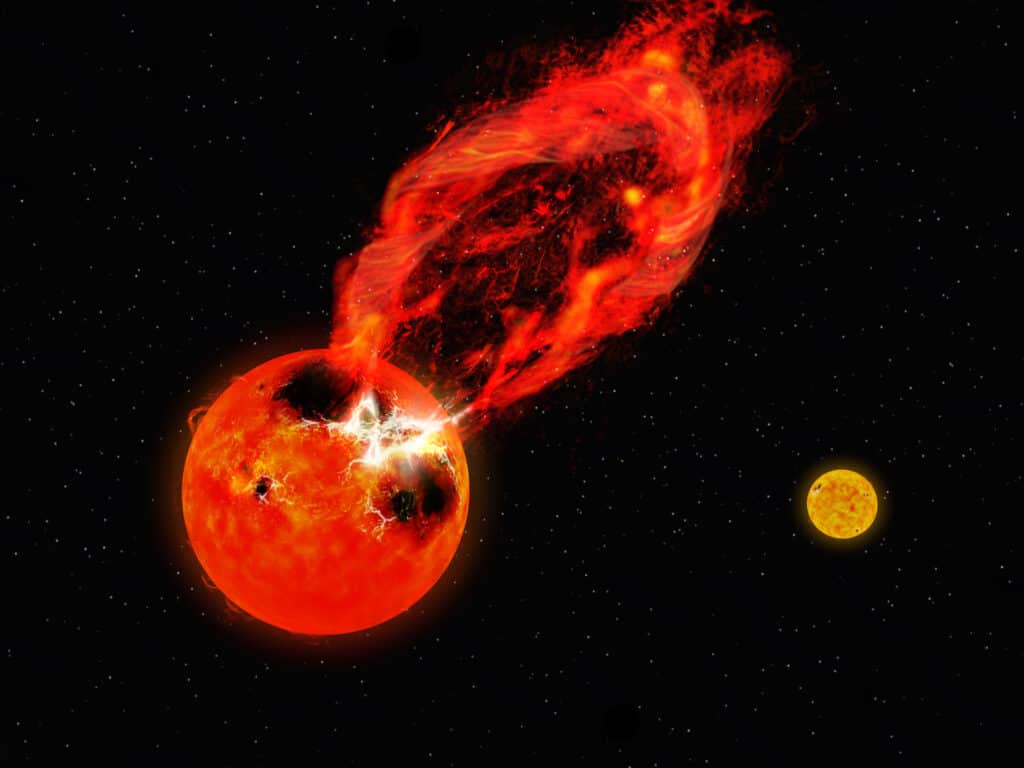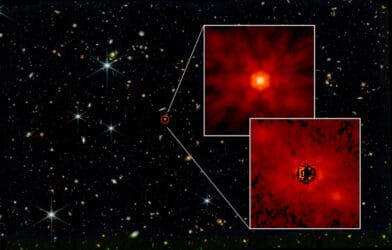Japanese astronomers have used simultaneous ground-based and space-based observations to study a superflare on a star, which started with a very massive, high-velocity prominence eruption. The observations were made using the Seimei Telescope and the Transiting Exoplanet Survey Satellite (TESS) to monitor a binary star system called V1355 Orionis, which is known to frequently release large-scale superflares.
Superflares are powerful bursts of radiation released by stars, which can be over 10 times larger than the largest solar flare ever seen on the Sun. Solar flares can influence the environment around Earth, referred to as space weather. More powerful superflares must have an even greater impact on the evolution of any planets forming around the star or the evolution of any life forming on those planets. However, the details of how superflares and prominence eruptions on stars occur have been unclear.
The team was able to capture a superflare with continuous, high temporal resolution observations and found that it originated from a prominence eruption. A prominence is a large, bright feature extending outward from the Sun’s surface, often in the shape of a loop. The prominence eruption was one of the most massive ever observed, carrying trillions of tons of material. The velocity of the eruption was also calculated, indicating that it was capable of breaking free of the star’s gravity and developing into Coronal Mass Ejections (CMEs).

CMEs are large, fast-moving bursts of plasma and magnetic field that are released from the Sun’s corona, and can cause geomagnetic storms when they interact with Earth’s magnetic field.
This new research gives us a better idea of how superflares and prominence eruptions on stars occur, and highlights the potential impact of these phenomena on the evolution of planets and life.
The research is published in The Astrophysical Journal.
The Seimei Telescope is a 3.8-meter telescope located at the Okayama Astrophysical Observatory in Japan. It is equipped with a high-resolution spectrograph and a near-infrared camera, and is used for a variety of astronomical observations, including exoplanet research, supernova studies, and the search for gravitational waves. The telescope is operated by the National Astronomical Observatory of Japan (NAOJ) and is part of the Global Relay of Observatories Watching Transients Happen (GROWTH) network, which aims to provide coordinated observations of transient events in the universe.












Comments